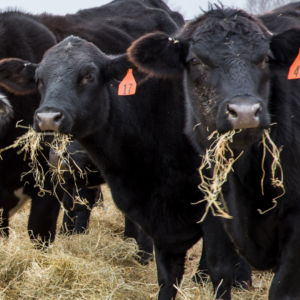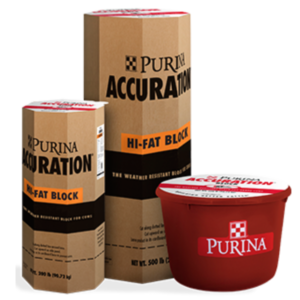 Feed expenses are one of the highest variable costs for cattle operations annually. The cost of hay to get your herd through the winter months accounts for a significant percentage of those expenses and can impact your profitability. Research has shown that more than 50% of hay may be wasted by poor storage methods or inefficient feed practices.
Feed expenses are one of the highest variable costs for cattle operations annually. The cost of hay to get your herd through the winter months accounts for a significant percentage of those expenses and can impact your profitability. Research has shown that more than 50% of hay may be wasted by poor storage methods or inefficient feed practices.
Storage
Improving your storage strategy is an investment that can pay off in the long run. Storing hay uncovered on bare ground is the cheapest and easiest method, but it comes at a cost. This storage method can lead to almost 30% dry matter loss in six months.
One way to reduce hay loss is to add a barrier between hay and the bare ground. This will reduce the moisture that seeps in over time and causes hay quality to diminish. A layer of gravel under bales or placing hay on pallets allows air to circulate. As a result, this extra barrier can reduce dry matter loss by two-thirds or more.
Another option is to provide further protection by covering bales. One advantage to covering bales is they can be stacked, requiring less ground cover. The most economical cover is a tarp. Additionally, individual wraps and a roof structure are good options as well.
Storage buildings provide the best protection from hay loss during storage at an average of 5% dry matter loss. However, they also have a higher investment cost and may be less convenient.
Feeding
Much of the waste that comes with feeding hay results from hay getting trampled or soiled. Limiting the amount of hay fed at one time can help limit waste. Research demonstrates that adjusting from feeding a four-day supply to a one-day supply can reduce waste by around 20%.
Utilizing a feeder has also been shown to reduce hay waste by as much as 45%. However, feeders may also increase the labor required for feeding hay and may not always be practical. Feeding on gravel or concrete can provide a good alternative to help reduce issues. If feeding on the ground, choose a well-drained area. And when feeding on a pasture, move hay feeding areas daily to reduce soil compaction and buildup and spread out the manure and nutrients.
Other hay feeding options include unrolling bales or grinding hay. An advantage to this method is the ability to move feeding areas around the pasture to ensure a more even distribution of manure and nutrients. However, these feeding systems are more labor intensive.
Bridge the gap
 A final way to ensure you’re getting the most use out of your winter forages is to utilize Purina supplements to fill the forage gap. Purina Accuration supplements help optimize digestibility and intake of low-quality forages. Purina Rangeland protein tubs provide readily available energy from forages. Implementing these supplements into your nutrition program can help get the most out of our forage investment. It can also assist your herd in maintaining optimal condition, even with lower quality forage.
A final way to ensure you’re getting the most use out of your winter forages is to utilize Purina supplements to fill the forage gap. Purina Accuration supplements help optimize digestibility and intake of low-quality forages. Purina Rangeland protein tubs provide readily available energy from forages. Implementing these supplements into your nutrition program can help get the most out of our forage investment. It can also assist your herd in maintaining optimal condition, even with lower quality forage.
Steven Myers, Ph.D – Purina Animal Nutrition